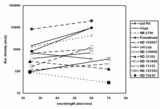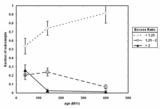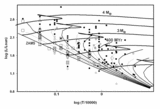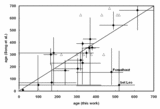Image Details
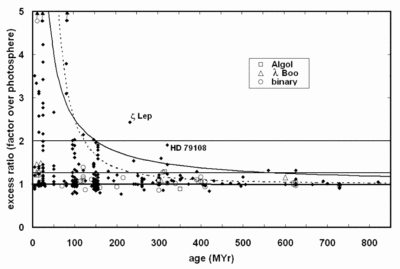
Caption: Fig. 1.
24 μm excess vs. age. Excess emission is indicated as the ratio of the measured flux density to that expected from the stellar photosphere alone: a value of 1 represents no excess. Additional horizontal lines show the threshold for detection of an excess, 1.25, and the one for a "large" excess, 2. The upward‐pointing arrows are, from left to right, HR 4796A, β Pic, and HD 21362. The thin solid line is an inverse time dependence, while the thin dashed line is inverse time squared. Age uncertainties are generally factors of roughly a factor of 1.5 below 200 Myr (where ages are almost entirely from cluster and moving group membership) and roughly a factor of 1.5–2 above 200 Myr (where many ages are assigned by placing the stars on the H‐R diagram).
Copyright and Terms & Conditions
© 2005. The American Astronomical Society. All rights reserved. Printed in U.S.A.


